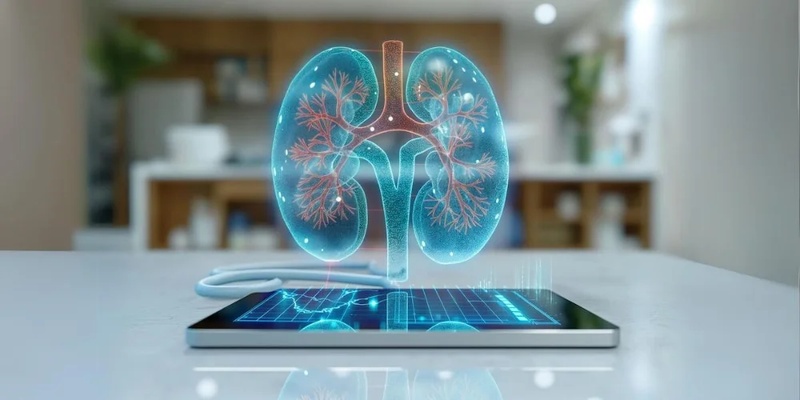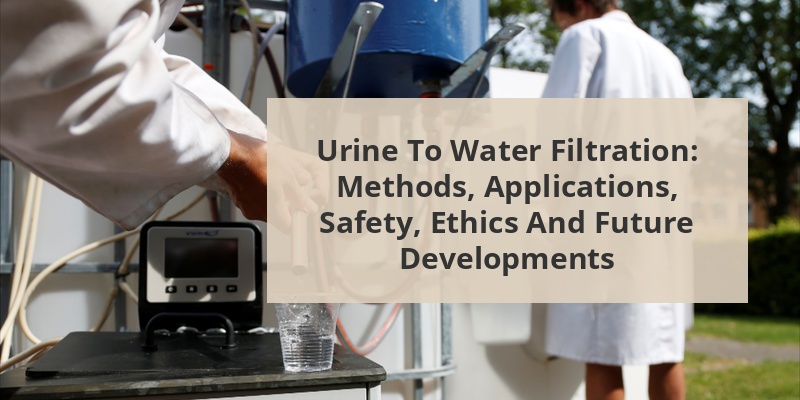Filtering urine into potable water is not just a theoretical concept but a practical reality used in specific situations across the world. The process, known as urine purification or recycling, involves several filtration technologies that can remove contaminants, salts, and organic compounds from human waste. Space agencies like NASA have been using urine recycling systems for years to provide astronauts with clean drinking water. The technology has applications beyond space – from emergency survival situations to addressing water scarcity in various regions. While the concept may seem unpleasant, the scientific principles behind it are sound and increasingly relevant in our water-conscious world.
Understanding what’s in urine helps explain the filtration challenge. Human urine is approximately 95% water, with the remaining 5% consisting of urea, creatinine, dissolved ions (chloride, sodium, potassium), hormones, and other organic compounds. The primary goal of filtration is to separate the water from these waste materials, which requires multiple purification steps.
The filtration process must address several types of contaminants: dissolved solids like minerals and salts, organic compounds, potential pathogens, and pharmaceuticals that might be present. Most systems use a combination of physical filtration, chemical treatment, and biological processes to achieve potable water standards.
While the concept may seem novel to some, it’s worth noting that all water on Earth exists in a continuous cycle of use and reuse. Municipal water treatment already processes water that has been through countless organisms before reaching our taps.
Content Navigation
Common Methods for Filtering Urine
Distillation
One of the oldest and most reliable methods is distillation, which involves heating urine until it evaporates, then condensing the vapor back into liquid. Distillation effectively separates water from most contaminants since salts, organic molecules, and other impurities typically have higher boiling points than water. However, this method requires significant energy and may not remove certain volatile compounds.
Membrane Filtration
Membrane technologies like reverse osmosis force water through a semipermeable membrane that blocks contaminants based on molecular size. Forward osmosis uses a concentration gradient rather than pressure to achieve similar results. These methods are highly effective at removing nearly all contaminants, including salts, bacteria, and most organic compounds.
Call 888-896-7031 for Free Local HVAC Quotes – Compare and Save Today!
Advanced Oxidation
This approach uses oxidizing agents like hydrogen peroxide, often combined with UV light, to break down organic contaminants. It’s particularly useful for destroying hormones, pharmaceuticals, and bacteria that might pass through other filtration methods.
Real-World Applications of Urine Filtration
Space Travel
The International Space Station (ISS) operates the Environmental Control and Life Support System (ECLSS), which recovers approximately 90% of water from urine, sweat, and breath humidity. This recycling system reduces the need to transport water from Earth, saving millions of dollars in launch costs and making long-duration space missions feasible.
Emergency Survival
In survival situations where clean water is unavailable, urine filtration could be life-saving. Some portable survival filters incorporate technology capable of making urine potable, though they’re typically recommended as a last resort after other water sources.
Water Scarcity Solutions
Some water-stressed regions are exploring closed-loop water systems that include treating all wastewater, including urine, to potable standards. Singapore’s NEWater and Orange County’s Groundwater Replenishment System already implement advanced purification of wastewater (though typically not directly from urine).
Comparison of Urine Filtration Technologies
| Technology | Effectiveness | Energy Requirements | Complexity | Portability |
|---|---|---|---|---|
| Distillation | High | Very High | Medium | Low |
| Reverse Osmosis | Very High | Medium | High | Medium |
| Forward Osmosis | High | Low | High | Medium |
| Activated Carbon | Medium | Low | Low | High |
| UV Treatment | Medium (pathogen-specific) | Medium | Low | Medium |
| Multi-stage Systems | Very High | High | Very High | Low |
Commercial and DIY Urine Filtration Systems
Several commercial systems designed specifically for urine filtration exist, particularly for off-grid or emergency applications. The LifeSaver bottle and similar products use advanced filtration membranes capable of purifying highly contaminated water, including urine in emergency scenarios.
NASA’s urine purification system costs approximately $250 million but is necessary for space missions. For terrestrial applications, commercial systems range from $1,000 to $50,000 depending on capacity and sophistication.
Call 888-896-7031 for Free Local HVAC Quotes – Compare and Save Today!
DIY solutions exist but carry significant risks if not properly designed. Simple solar stills can distill urine in survival situations, but they don’t guarantee the removal of all harmful substances.
Safety and Health Considerations
The primary concern with filtered urine is ensuring all potentially harmful substances are removed. Properly filtered urine water can meet all safety standards for drinking water, but inadequate filtration poses serious health risks.
Water purified from urine must meet the same microbiological and chemical standards as any drinking water. This requires testing for bacteria, viruses, heavy metals, nitrates, and dissolved solids. Most advanced systems include continuous monitoring and multiple purification barriers to ensure safety.
The psychological barrier to drinking reclaimed water from urine remains significant despite the scientific evidence of its safety. This “yuck factor” has slowed widespread adoption of direct potable reuse systems, even in water-scarce regions.
Ethical and Cultural Perspectives
Views on urine recycling vary widely across cultures. While some societies find the concept inherently repulsive, others take a more pragmatic approach, especially in regions facing severe water scarcity. Education about the water cycle and purification processes can help overcome cultural reservations.
In discussing urine filtration, it’s important to recognize that all water on Earth has been recycled countless times through natural processes. Modern filtration technologies simply accelerate what happens in nature, often achieving even higher purity standards.
Future Developments in Urine Filtration

Research continues to improve the efficiency and effectiveness of urine filtration systems. New membrane materials, more energy-efficient processes, and compact designs are making these systems more practical for various applications.
Nanotechnology offers promising advances in filtration efficiency, with carbon nanotubes and graphene-oxide membranes potentially revolutionizing water purification. These materials can filter out contaminants at the molecular level while requiring less energy than conventional methods.
As water scarcity becomes more prevalent globally, attitudes toward water recycling, including urine filtration, are likely to shift toward greater acceptance, driving further technological innovation and implementation.
Tips for Getting the Best HVAC Prices
- Prioritize Quality Over Cost
The most critical factor in any HVAC project is the quality of the installation. Don’t compromise on contractor expertise just to save money. - Check for Rebates
Always research current rebates and incentives — they can significantly reduce your overall cost. - Compare Multiple Quotes
Request at least three estimates before making your choice. You can click here to get three free quotes from local professionals. These quotes include available rebates and tax credits and automatically exclude unqualified contractors. - Negotiate Smartly
Once you've chosen a contractor, use the proven strategies from our guide — How Homeowners Can Negotiate with HVAC Dealers — to get the best possible final price.

